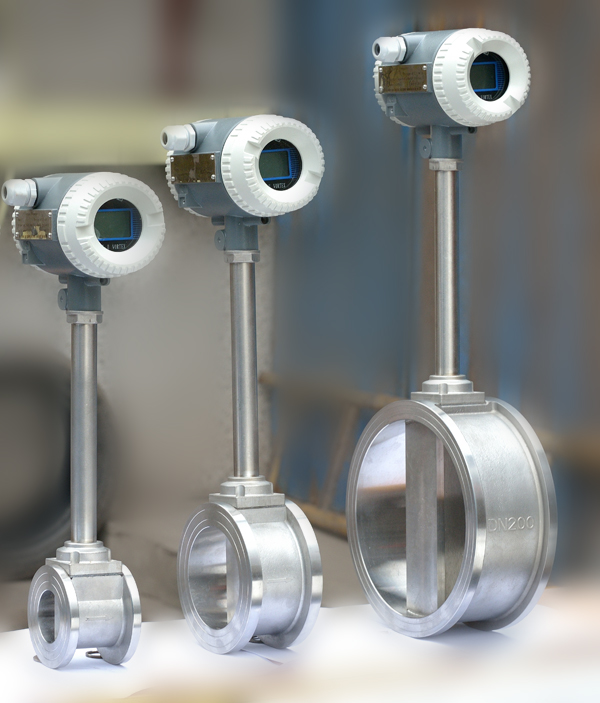Steam measurement is different from other media, in the actual measurement, the factors impact the accuracy is very large, often appear flow meter test are qualified, but often feel phenomenon that the actual measurement is not accurate. There are mainly six factors that affect the accurate measurement of the steam flowmeter measurement:

(Vortex flowmeter)
First. The upstream or downstream straight pipe shortcomings.
For other traditional flowmeters, the requirements for front and rear straight pipe installation are respectively 20D and 5D. If the short straight pipe of upstream or downstream, it will lead to the the fluid develop in sufficiently and there will generate a vortex and distortion of flow velocity distribution profile .
Second. The range ratio is insufficient.
The range ratio is the ratio between the maximum flow rate and the minimum flow rate that can be measured in a range where a flowmeter can ensure a given accuracy and reproducibility. However, caution must be exercised when dealing with range ratios, since the range ratio is based on the actual flow rate and the maximum allowable velocity for the steam system is 35 m / s. Higher flow rates can cause erosion and noise in the system. The different flowmeter allows the minimum flow rate is different, the general vortex flowmeter can measure the minimum steam flow rate of 2.8m / s. For the range ratio is insufficient, should use a large range ratio flow meter or select multiple flow meters in parallel.
Third. The steam density compensation is not correct.
In order to correctly measure the mass flow of steam, it is necessary to consider the changes of steam pressure and temperature, that is, the steam density compensation. Different types of flowmeters are affected by density variations in different ways. Vortex flowmeter signal output is related to the flow rate only, as to differential pressure flowmeter, related to its mass flow and flowmeter geometry, square root of the differential pressure and density square root.
Fourth. Differential pressure transmission error (differential pressure flowmeter).
First, drift of the zero point. After installation of the transmitter, they often found the zero point output is differential from the zero position calibration output. This situation is called static pressure error. Second, the unreasonable arrangement of impulse tube. Impulse pipelines should ensure a reasonable slope so that the bubble may occur within the tube quickly rose to the mother tube, and the impurities appears to tube quickly sink to the sewage valve. Impulse pipelines should be regularly checked and maintained to ensure that no leakage and without clogging.
Fifth. The impact of steam dryness.
At present, the flowmeter for measuring steam flow is mostly the volumetric type flowmeter, first measure the volumetric flow and then the mass flow is calculated by the steam density, ie the steam is assumed to be completely dry. However, this is hardly happen, and in this way of calculation, the resulting data will be lower than the actual flow. Therefore, the secondary instrument (flow computer) of flow meter should have the function of setting the saturation steam dryness. But in the actual working conditions, to determine the degree of dry steam is also very difficult. If the steam quality at the entrance of the steam flowmeter can be improved, the measurement accuracy of the steam flowmeter can be improved.
6. Pipe vibration.
There are more sensitive to mechanical vibration for steam flowmeter. The measurement results susceptible to interference, it should design a reliable support before and after the flow meter pipe.
Post time: 21-09-21
